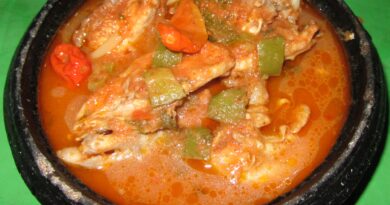Tahini
Tahini: From Ancient Elixirs to Modern Culinary Marvels
Introduction
In the world of culinary delights, certain ingredients have transcended borders and become stars on the global stage. One such star, with roots deeply embedded in Middle Eastern and Mediterranean cuisines, is tahini. This versatile and luscious paste, made from ground sesame seeds, has a rich history that dates back centuries. Join us on a journey as we explore the origins, nutritional benefits, diverse uses, and cultural significance of tahini – a magical elixir that has found its way into kitchens worldwide.
The Ancient Origins of Tahini
Tahini’s story is one of ancient origins, tracing back to some of the oldest civilizations in the world. The use of sesame seeds can be found in the historical records of Mesopotamia and ancient Egypt, where the seeds were pressed to extract oil for culinary and medicinal purposes.
The word “tahini” itself is derived from the Arabic word “tahana,” which means “to grind.” This straightforward yet essential process involves grinding sesame seeds to produce a smooth and creamy paste. The technique of making tahini has been passed down through generations, and its usage has evolved to become a fundamental component in Middle Eastern and Mediterranean cuisines.
Nutritional Powerhouse
Tahini is not just a flavorful addition to meals; it is also a nutritional powerhouse. Packed with essential nutrients, it offers a range of health benefits that contribute to its popularity among health-conscious food enthusiasts.
- Rich in Healthy Fats: Sesame seeds are a great source of healthy fats, particularly monounsaturated and polyunsaturated fats. These fats play a crucial role in supporting heart health and maintaining overall well-being.
- Protein Content: Tahini is a good source of plant-based protein, making it an excellent addition to vegetarian and vegan diets. Protein is essential for muscle repair, immune function, and overall cellular health.
- Vitamins and Minerals: Sesame seeds are rich in important vitamins and minerals, including B vitamins, iron, zinc, magnesium, and calcium. These nutrients contribute to bone health, energy metabolism, and immune function.
- Antioxidant Properties: Sesame seeds contain antioxidants, such as sesamol and sesamin, which help combat oxidative stress and inflammation in the body.
- Fiber Content: Tahini contains dietary fiber, supporting digestive health and providing a sense of satiety, which can be beneficial for weight management.
Uses in Culinary Delights
Tahini’s versatility in the kitchen makes it a beloved ingredient in a myriad of dishes, ranging from savory to sweet. Here are some popular uses of tahini in culinary delights:
- Hummus: Perhaps the most well-known use of tahini is in the creation of hummus. Combined with chickpeas, olive oil, garlic, lemon juice, and a dash of salt, tahini forms the creamy base that defines this classic Middle Eastern dip.
- Salad Dressings: Tahini is a key ingredient in many salad dressings, adding a creamy texture and nutty flavor. When combined with lemon juice, garlic, and herbs, it creates a delectable dressing for salads and grain bowls.
- Dips and Sauces: Beyond hummus, tahini is utilized in various dips and sauces. It can be mixed with yogurt, garlic, and herbs to create a flavorful dip for veggies or used as a sauce for grilled meats and falafel.
- Baking: Tahini’s rich and nutty profile makes it a fantastic addition to baked goods. It can be incorporated into cookies, brownies, and cakes, adding depth of flavor and moisture.
- Smoothies: A spoonful of tahini in a fruit smoothie can elevate the taste and nutritional content. Its creaminess pairs well with fruits like bananas, dates, and berries.
- Tahini Drizzle: Tahini can be thinned with water or lemon juice to create a drizzle that adds a finishing touch to roasted vegetables, grains, or even desserts.
Cultural Significance of Tahini
Tahini holds immense cultural significance, particularly in Middle Eastern and Mediterranean cuisines. Its presence in traditional dishes and rituals reflects its integral role in these culinary traditions.
- Symbol of Hospitality: In Middle Eastern cultures, offering tahini-based dishes is a symbol of hospitality. Whether it’s a bowl of hummus or a tahini-infused sauce, sharing these foods is a gesture of warmth and welcome.
- Religious Symbolism: Tahini is often featured in religious celebrations and rituals. In some cultures, it is used during religious holidays or as part of special meals.
- Family Traditions: The art of making tahini is often passed down through families, with each generation contributing to the refinement of recipes and techniques. Family gatherings may revolve around the preparation and enjoyment of tahini-infused dishes.
- Marketplace Staple: In bustling markets across the Middle East, vendors proudly display tahini alongside other staples like olive oil, spices, and grains. The aromatic scent of freshly ground sesame seeds wafts through these markets, creating an immersive culinary experience.
- Culinary Festivals: Tahini festivals and food events celebrate the versatility of this ingredient. These gatherings showcase different varieties of tahini, along with creative dishes that highlight its unique flavor.
Modern Trends and Global Appeal
While deeply rooted in ancient traditions, tahini has also found its place in modern global cuisine. As people around the world explore diverse culinary traditions, tahini has become a beloved ingredient, embraced for its taste, nutritional benefits, and versatility.
- Plant-Based Cuisine: With the rise of plant-based diets, tahini has become a go-to ingredient for adding richness and depth of flavor to vegetarian and vegan dishes. Its creamy texture makes it a popular substitute for dairy-based ingredients in various recipes.
- Gourmet Creations: Chefs and food enthusiasts are exploring tahini’s potential in gourmet creations. From tahini-based desserts to inventive savory dishes, the possibilities are endless.
- Health Food Movement: Tahini’s nutritional profile aligns with the health food movement, making it a sought-after ingredient for those seeking nutrient-dense and wholesome options.
- International Fusion: Tahini has become a staple in fusion cuisine, blending seamlessly with flavors from around the world. Its ability to enhance both sweet and savory dishes makes it a versatile choice for creative chefs.
- Tahini-Based Products: The demand for tahini has led to the creation of a variety of tahini-based products, including tahini spreads, dressings, and desserts. These products provide convenient options for those looking to incorporate tahini into their daily meals.
Conclusion
Tahini, with its ancient roots and modern appeal, is a testament to the enduring allure of certain culinary treasures. From its origins in the heart of ancient civilizations to its widespread popularity in contemporary kitchens, tahini continues to captivate taste buds and enrich culinary traditions around the world.
As you savor the velvety richness of tahini in your favorite dishes, whether it’s a spoonful of hummus, a drizzle over roasted vegetables, or a decadent dessert creation, you partake in a culinary journey that spans millennia. Tahini is more than just a condiment; it is a link to the past, a celebration of diversity, and a source of nourishment for body and soul.



